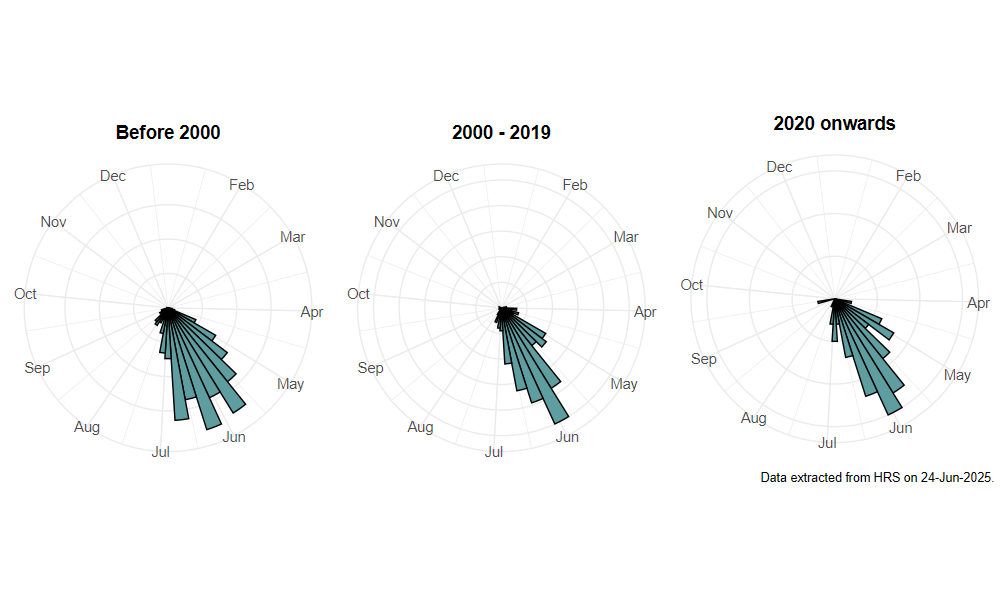Dasysyrphus pinastri (De Geer, 1776)
Identification
Identification difficulty = 3. ![]()
![]() according to Ball & Morris, 20241
according to Ball & Morris, 20241
Synonymy
Syrphus lunulatus Meigen in Coe(1953)2, Dasysyrphus lunulatus (Meigen) in Stubbs & Falk (1983)3.
Biology
The larva is aphidophagous and arboreal, occurring on both coniferous and deciduous trees. Usually found near trees along woodland rides and edges and around mature hedgerows. Records are most frequently from or near coniferous forest and plantations. Adults visit a wide range of flowers.
Flight period
The following plots show the number of unique records per week excluding those reported to be of immature stages.

Distribution
This species occurs throughout mainland Britain but is seemingly more commonly recorded from Derbyshire northwards. Many of the strong concentrations of records coincide with comparatively highly coniferised areas.

Trends
The following plots show the Frescalo TFactor vs year and a map of the rescaled frequency (all records) for the species.
-
Ball, S., & Morris, R. (2024). Hoverflies of Britain and Ireland. WILDGuides (3rd ed.). Oxford: Princeton University Press. ↩
-
Coe, R. (1953). Diptera: Syrphidae. Handbooks for the Identification of British Insects, 10(1), 1–98. ↩
-
Stubbs, A., & Falk, S. (1983). British Hoverflies: An Illustrated Identification Guide (1st ed.). Reading: BENHS. ↩